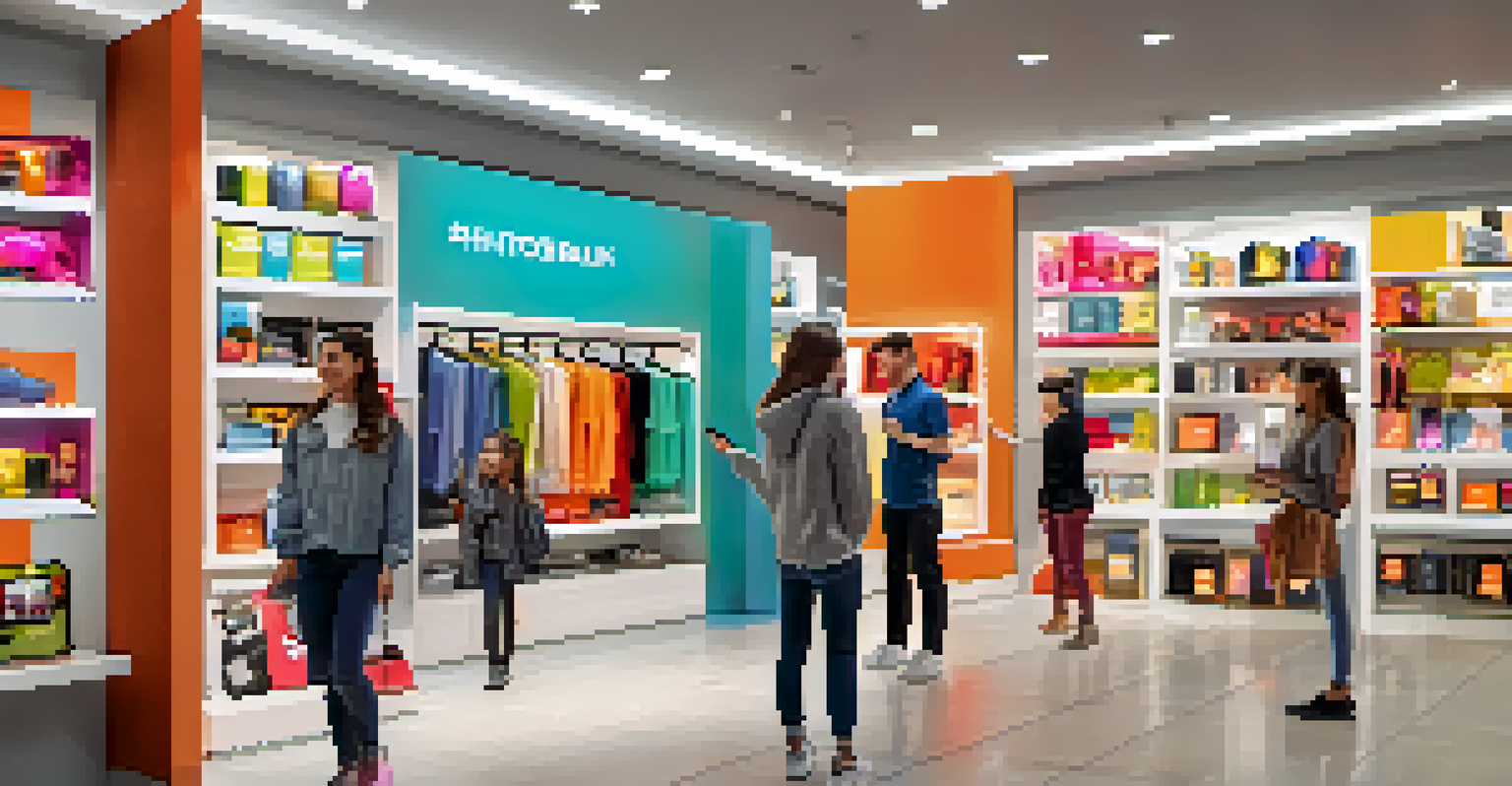Augmented Reality and Retail Marketing: An Effective Duo

Understanding Augmented Reality in Retail Marketing
Augmented reality (AR) is a technology that overlays digital information onto the real world, creating immersive experiences for users. In retail marketing, this means customers can visualize products in their own space before making a purchase. For example, furniture stores often use AR apps that allow customers to see how a couch would look in their living room.
Augmented reality is not just a technology; it's a way to connect with your audience in a more meaningful way.
AR is transforming how brands engage with consumers, making shopping more interactive and personalized. It bridges the gap between online and offline shopping experiences, enhancing customer satisfaction. This technology elevates traditional marketing by providing an innovative way for consumers to connect with products.
As shoppers become more tech-savvy, integrating AR into retail marketing strategies is essential. Not only does it attract attention, but it also fosters loyalty by offering engaging experiences. Retailers who embrace AR can stand out in a competitive landscape, ultimately driving sales.
Benefits of Augmented Reality for Retail Brands
One of the main advantages of AR in retail is its ability to boost customer engagement. When shoppers interact with products in a fun, immersive way, they are more likely to remember the brand and make a purchase. This engagement can lead to increased foot traffic in stores or higher website visits.

Moreover, AR enhances the decision-making process by allowing customers to visualize products in their environment. This visualization can reduce the anxiety often associated with buying items like clothes or home decor, where appearance matters significantly. For instance, beauty brands use AR to let users try on makeup virtually, ensuring they choose the right shades.
AR Enhances Customer Engagement
Augmented reality creates immersive and interactive shopping experiences, boosting customer engagement and increasing the likelihood of purchases.
Additionally, AR can provide valuable data insights for retailers. By tracking how customers interact with AR features, brands can better understand preferences and tailor their marketing strategies. This data-driven approach can lead to more effective campaigns and improved customer experiences.
Successful Examples of AR in Retail Marketing
Several brands have successfully implemented AR in their marketing strategies, setting examples for others to follow. For instance, IKEA's mobile app allows users to place furniture virtually in their homes, making it easier to envision how it fits. This practical use of AR has enhanced customer satisfaction and reduced return rates.
The future of retail is not about the transaction; it's about the experience.
Another notable example is Nike, which offers an AR feature in its app that allows customers to scan their feet and find the perfect shoe size. This innovation not only improves the shopping experience but also empowers customers to make informed decisions, reducing the likelihood of returns due to sizing issues.
These successful examples illustrate that AR is not just a trend but a powerful tool for retail marketing. By creating memorable experiences, brands can foster stronger connections with consumers, leading to increased loyalty and sales.
Challenges of Implementing AR in Retail
While AR offers numerous benefits, retailers face challenges when integrating this technology. One significant hurdle is the cost of development and implementation. Creating high-quality AR experiences requires investment in technology and skilled personnel, which might be a barrier for smaller brands.
Another challenge is ensuring that the technology is user-friendly. If the AR experience is too complicated or doesn’t work as intended, customers may become frustrated and abandon the experience altogether. Retailers must prioritize seamless integration to ensure positive user experiences.
AR Reduces Purchase Anxiety
By allowing customers to visualize products in their own space, AR helps alleviate anxiety related to buying items, particularly in categories like home decor and fashion.
Lastly, there's the question of accessibility. Not all customers have the latest smartphones or devices that support AR applications. Retailers need to consider their target audience and find ways to make AR experiences available to a broader range of consumers.
Future Trends of AR in Retail Marketing
The future of AR in retail marketing looks promising, with continuous advancements in technology. As AR tools become more accessible and affordable, more retailers are likely to adopt them. This shift will lead to an increase in interactive shopping experiences, making retail even more engaging.
We can also expect more personalized marketing through AR. As retailers gather data on user preferences, they can tailor AR experiences to individual customers, enhancing the shopping journey. This level of personalization can significantly improve customer satisfaction and loyalty.
Moreover, the integration of AR with other technologies, such as artificial intelligence (AI), will create even richer shopping experiences. Imagine a virtual shopping assistant powered by AI that helps you browse and find products through AR. This synergy will redefine how consumers interact with brands in the retail space.
Integrating AR with Omnichannel Marketing Strategies
To maximize the impact of AR, retailers should integrate it into their omnichannel marketing strategies. This means combining online and offline efforts to create a cohesive and seamless shopping experience for consumers. For instance, AR can be used in physical stores to enhance product displays or assist in navigation.
Additionally, online retailers can leverage AR in their e-commerce platforms, allowing customers to visualize products before purchasing. This strategy creates consistency across channels and reinforces brand identity, making it easier for consumers to engage with the brand wherever they shop.
AR Integration is Key for Retailers
Integrating augmented reality into omnichannel marketing strategies enables retailers to provide a seamless shopping experience, fostering brand loyalty and enhancing customer satisfaction.
A well-executed omnichannel strategy that includes AR can significantly enhance customer loyalty. Shoppers appreciate a unified experience, and AR can play a crucial role in bridging the gap between digital and physical retail.
Conclusion: Embracing AR in Retail Marketing
In conclusion, augmented reality presents an exciting opportunity for retail marketing to evolve. By creating engaging and immersive experiences, retailers can capture consumer attention and drive sales. As technology continues to advance, the potential for AR in retail is limitless.
Retailers who embrace AR can differentiate themselves in a crowded marketplace. It's not just about selling a product anymore; it's about crafting memorable shopping experiences that resonate with customers. This shift requires innovation, but the rewards can be substantial.

As we move forward, the integration of AR into retail marketing strategies will likely become the norm rather than the exception. Brands that adapt and invest in AR will position themselves as leaders in the retail landscape, ready to meet the demands of tech-savvy consumers.